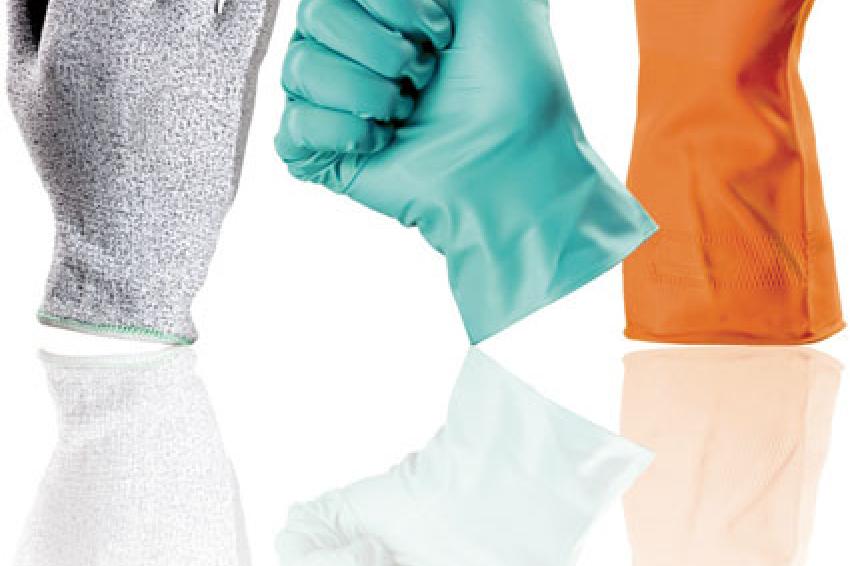Surfing on Global Megatrends
Sustainable Development Needs Innovation
The market growth for latex polymers is driven by a number of megatrends and the efforts for a sustainable future. These current trends give latex producers the opportunity to differentiate themselves through innovation and to enter new niche markets. The relevant trends for the latex industry are climate change, ecology movement, growing population and globalization as well as mobility and transportation.
Latex is used in hundreds of applications and in most cases is an irreplaceable product. The product features can be altered by changing the production process while keeping the ingredients the same, providing nearly unlimited innovation potential with only minor capital expenditure requirements. Synthetic latex provides protection and binding across a variety of end-use industries with global demand for 7.5 million dry tons in 2009. The end-markets comprise the paper industry as well as healthcare, construction and textiles, some of them in fast growing segments. Many product properties and performance can only be achieved by using latex.
The latex industry benefits from some general megatrends such as the growing importance of protection and health, relevant for the protective gloves end-market, the increasing focus on more environmentally friendly products like solvent-free water-based binder systems, low VOC, etc. or the increased mobility and transport leading to growing demand for infrastructure and streets. These megatrends are reflected in PolymerLatex's innovation strategy and are in most cases already initiated.
Although in part a commoditised segment, the latex market comprises a broad variety of heterogenic application areas, characterized by high margin, performance products and significant innovations. These attractive segments comprise a large share of the total latex market and give latex producers the opportunity to leverage their distinctive competitive advantages and to enter into new market niches through innovation. In this market environment, the speed of innovation is a key differentiator between producers as well.
Challenges for Latex Producers
Synthetic latex is a product which you can find in everyday's life, not only in the obvious products like latex mattresses, carpets, gloves or latex paint but as well in "hidden" products where you would not assume latex to be involved like in shoes, clothing, paper, packaging tapes, tires, roofing felts and tapes for roof insulation and even food & beverage cans. Based on aqueous process, latex is per se a "green" technology as environmentally harmful organic solvents are not used. The reduction of emissions drives the need for low VOC products especially for all applications with relation to food, skin contact and indoor use. Indoor applications like carpets, paints, tile adhesives and packaging are in the focus of the development of low VOC lattices. Skin contact plays a major role in baby diapers, textiles and nonwovens for clothing and of course gloves. Food contact applications include paper for packaging as well as adhesives and sealants. Latex products for food contact require FDA approvals for all used ingredients. Odour and taste of enclosed food shall not be impacted by the packaging material. This means intensive testing and long approval phases for all materials used in direct or indirect contact with food and beverages. Some ingredients which have extremely low human odour detection threshold like certain mercaptanes require special analytical methods like combination of GC with the human nose -"GC sniffing". The challenge is to find raw materials with low impact on odour and taste and to build up know-how in special analysis methods on how to detect very small quantities of substances which are either used or occur as byproducts in the polymerisation process.
Residual monomers are to the greatest possible extent removed during the process by post polymerisation or stripping. PolymerLatex has also optimised its process conditions to minimize formation of byproducts to fulfil the strictest requirements. Formaldehyde another VOC that occurs in many areas of life, e.g. flake board, lacquers may cause the so called "sick building syndrome". Formaldehyde is detectable as well as a byproduct in emulsion polymerisation process. PolymerLatex has found a formaldehyde-free postactivation method which significantly reduces the amount of formaldehyde to a level below detection limit without changes of product properties and cost impact. PolymerLatex is developing lattices with formaldehyde free crosslinking systems which allow producing convenient self crosslinkable lattices for textile applications as well as medical devices and gloves. These systems can be used alternatively to conventional vulcanisation systems with additional advantage of fast curing rates and abandonment of accelerators which may cause allergies. Our customers benefit from the new technology as it allows them to comply with current and future legislative requirements like EC1 norm, "Blue Angel" and Ökotex 100 standard.
Material Efficiency
Material efficiency is another driver for innovation which is reflected in many projects such as the development of nitrile lattices with improved mechanical properties that allow the reduction of raw material up to 20% to produce thinner gloves with better comfort and tactile sensation or binders for paper coating with improved binding power providing significant raw material reduction. As latex is a higher value component in our clients formulations, it is often tried to reduce the amount of latex in the compounds by the use of fillers such as clay, chalk or starch e.g. in paper coating formulations, carpet back coating or roofing felts and thin disposable gloves. Our task is to provide compatibility of our lattices for fillers while maintaining performance in the application. This helps our customers benefit from raw material and processing savings. Internal processes are continuously optimised in order to make sure that always the most efficient process conditions are used for production of our lattices. High solid content is a target for water based systems to reduce energy demand for water evaporation as in most final applications the latex is being used in dry form. Our processes allow solid content up to 70% meaning high material and energy efficiency in transport, storage and processing.
Renewable Resources
Research for alternative raw materials is mainly driven by the trend to use renewable resources such as starch or oils as well as the recent developments in availability of oil based raw materials such as butadiene or acrylics which are essential as monomers for the latex industry. Our researchers are racking their brains to develop "green lattices" based on renewable raw materials. Ongoing projects target to incorporate monomers from renewable resources while maintaining the same level of performance in the end application.
Conclusions
PolymerLatex is prepared to take up the challenges of a changing world and the necessity for sustainable developments for the future. Our customers can rely on very well designed and processed products, as well as our professional services. It is also our endeavour to support our customers efforts for a sustainable future, because this task can only be achieved together.
Contact
SYNTHOMER Deutschland GmbH
Werrastr. 10
45768 Marl
Germany











